Rope bondage technique: Frech Bowline - wrist and ankle restraints
articles and tutorials bondage techniques Rope cuffs and bondage restraints
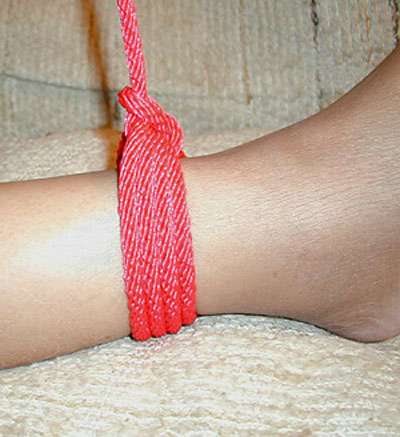
This method has a couple of features that are useful in special situations. It is easier to tie quickly in the dark of a dungeon. It is difficult to keep the loops of our standard restraint from crossing (which would create pressure points) when you canít see what you are doing.
Also, the tail of this restraint is a single rope. Depending on what you are tying it to, that may be better than the twin tails of the standard restraint.
And this restraint uses less rope than the standard restraint, so itís handy when youíre running out of rope.
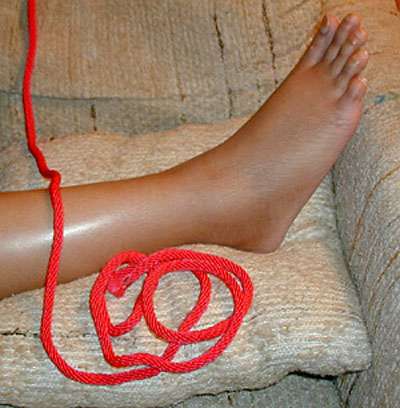
The tie begins with a 12-foot length of 5/16-inch rope. Drape the rope over the limb to be tied, with the long end away from you, and a couple of feet between you and the limb.
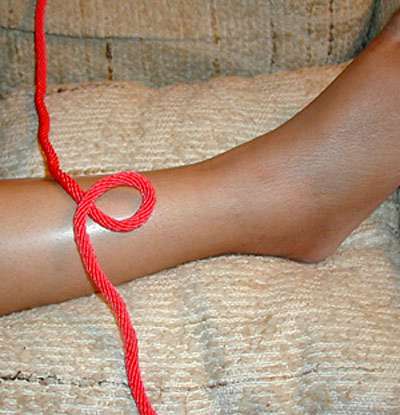
Make a counter-clockwise loop over the limb, with the short end of the rope on top, like this.
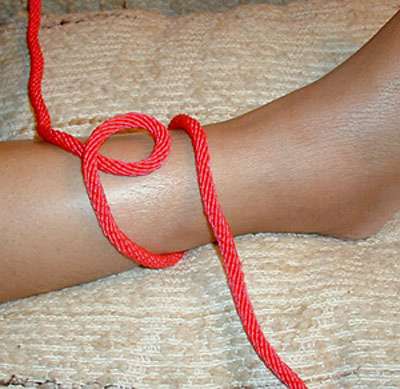
Take the short end under the limb, and bring it over the top again.
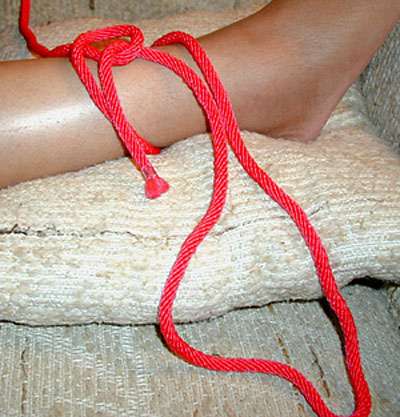
Bring the short end of the rope through the loop, from back to front.
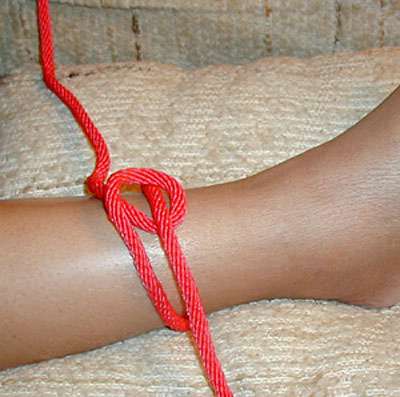
Pull it snug, but not too tight. The general rule is that you should always be able to slip a finger between the ropes and the skin. If you can't, it is too tight, and may cause circulation problems or nerve damage.
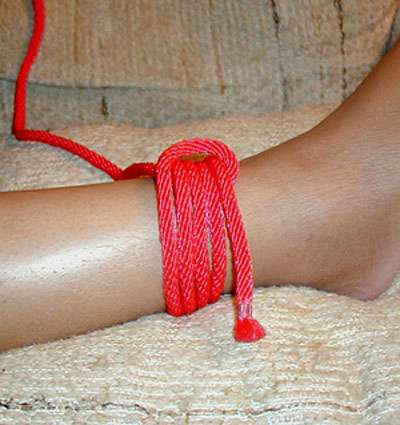
Pass the end of the rope under the limb, as before, and bring it through the loop again, from back to front, to the right of the previous wrap. Continue this process until you have 4 or 5 wraps.
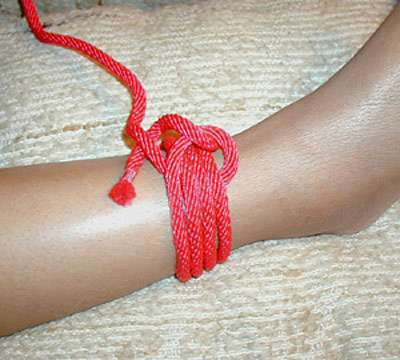
Take the short end of the rope, and wrap it behind the long rope, counterclockwise.
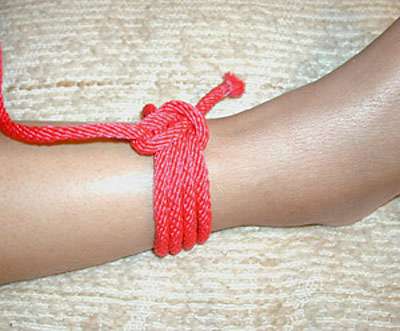
Now push the end back through the loop.
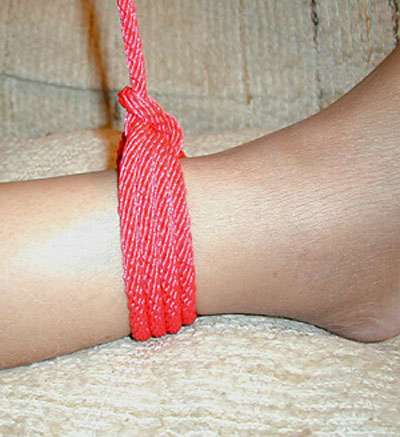
Gently pull alternately on the short end and the long end until the knot is all snug.
When tension is exerted on the long rope, the loop clamps down on the wraps around the limb, keeping the restraint from tightening up.




